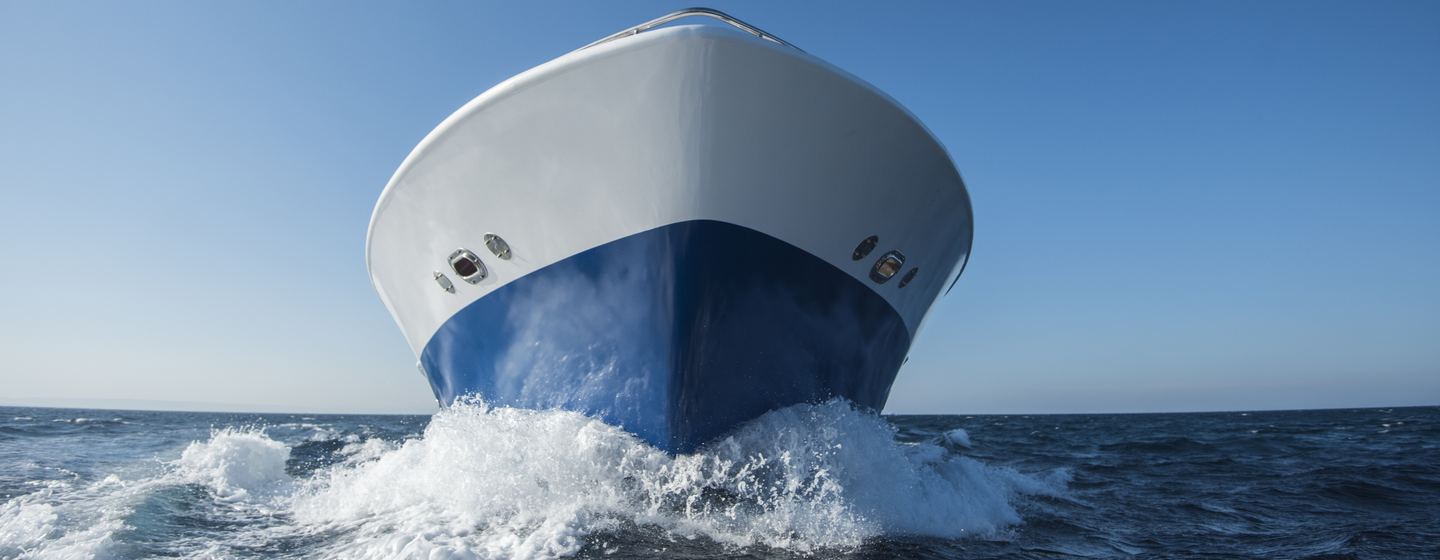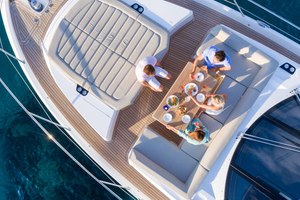Understanding a vessel's draft is crucial when it comes to making an informed purchase decision. Whether you plan to anchor close to the shore of exotic islands or moor at a luxurious five-star marina, having a precise understanding of your yacht's draft is required.
When charting out a voyage, seasoned skippers will always take into account the vessel's draft, and for good reason. If you're the owner and operator of your yacht, neglecting this vital piece of information can, at its worst, result in dire consequences for your yacht and the safety of everyone onboard. At best, it's a slightly embarrassed wave to other water users as you wait for the tide to rise. Accounting for the yacht's draft is not just a matter of convenience, it's a matter of ensuring a smooth and safe voyage.
What is Draft?
Yacht draft refers to the depth of the submerged part of the vessel below the waterline. It is the measurement that states how deep the boat extends into the water.

An understanding of the draft of your yacht (or one you plan to buy) is essential in assessing its navigational capabilities in shallow waters and its suitability for specific waterways. A shallower draft permits access closer to the shore, although it may impact stability, whereas a deeper draft can offer more stability but restricts access to shallower regions. In the yacht sector, understanding draft is vital for choosing vessels suitable for different cruising conditions.
Shallow Draft
Shallow draft vessels have a limited vertical distance between the waterline and the lowest point of their hull beneath the water's surface. These vessels are designed for navigating in shallow waters, making them suitable for coastal and inland waterways. They offer increased access to shallow areas but may sacrifice some stability and open-water performance.

Deep Draft
Deep draft vessels, on the other hand, have a greater vertical distance between the waterline and the deepest point of their hull. These vessels are well-suited for offshore and open-water sailing, as their deeper drafts contribute to stability and better performance. However, they may have limitations in accessing shallow or restricted waterways.
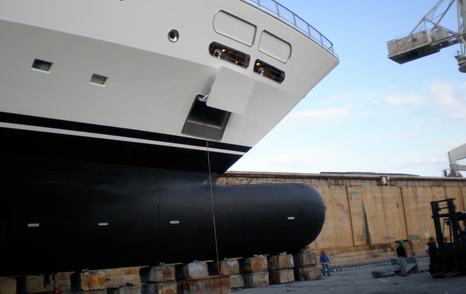
The choice between shallow and deep draft vessels depends on the intended use and navigational requirements of the yacht.
Why Does Draft Matter?
- Navigational Considerations: The draft of a yacht is crucial for navigating bodies of water, especially in areas with varying water depths. It determines where a vessel can safely operate and is a key factor in avoiding running aground. Understanding a boat's draft is required for planning routes and ensuring safe passage through both shallow and deep waters.
- Access to Waterways: Different bodies of water have varying depths, and vessels with deeper drafts may be limited in terms of the waterways they can access. Boaters often choose vessels with drafts that suit their intended cruising areas, whether it's coastal, inland, or offshore waters.
- Stability: Draft also has an impact on a vessel's stability. In general, boats with deeper drafts tend to be more stable in open water, which is desirable for offshore cruising. Conversely, boats with shallower drafts might be better suited for navigating shallow coastal waters, but they may sacrifice some stability.
- Performance: The relationship between draft and performance is complex. Deeper drafts can provide better performance and speed in many cases, while shallower drafts may excel in shallow, sheltered areas. Yacht owners often need to strike a balance between the draft and other design factors to achieve their desired boating characteristics.
- Yacht Selection: When it comes to choosing a yacht, understanding draft is essential. It's one of the key specifications that buyers consider when evaluating vessels, alongside other factors like length and beam. Your choice of draft should align with your intended use and cruising areas.
Nautical Charts
Determining whether your motor yacht has or will have sufficient water clearance might initially seem like a daunting task. However, with the aid of marine charts, modern navigation equipment, and a clear understanding of your boat's draft, this process becomes remarkably straightforward and stress-free.
A nautical chart essentially serves as a comprehensive map of the sea. Learning to read and understand the series of numbers littering the areas that indicate water, will show at a glance whether you can navigate in that area, or not.
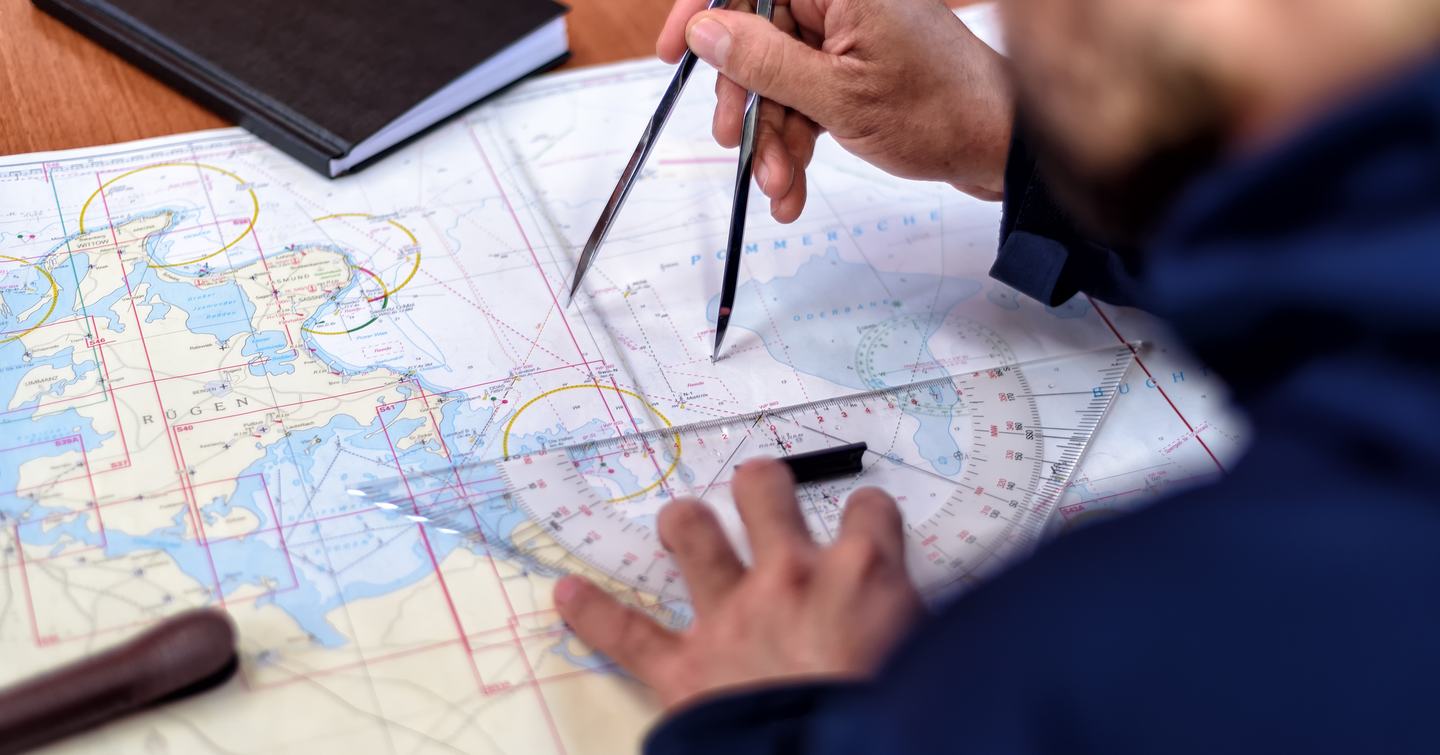
Depending on the type of chart, the water may appear in white and varying shades of blue, or consistently blue throughout. The 'legend' on the chart, serving as its contents page, specifies whether the charted depths are in feet or meters. This detail is crucial to note, as overlooking it can result in yacht groundings, a mishap that many have unfortunately encountered.
The figures represent the water depth at the 'lowest predicted astronomical tide,' commonly known as the chart datum, indicating the lowest expected water level. These charted depths serve as crucial information to help you plan your safety margin. For instance, if your yacht has a 2-meter keel, ensure you stay in waters deeper than 5 meters, providing a safety margin of 3 meters below the yacht.
To safely anchor in a secluded bay, it's important to consult the chart datum and navigate to areas where the chart datum indicates at least your keel depth (draft) plus one meter for clearance. In tidal regions, additional calculations may be necessary, but considering the chart datum as the minimum water level and accounting for the potential increase in depth due to the tide will help prevent grounding.
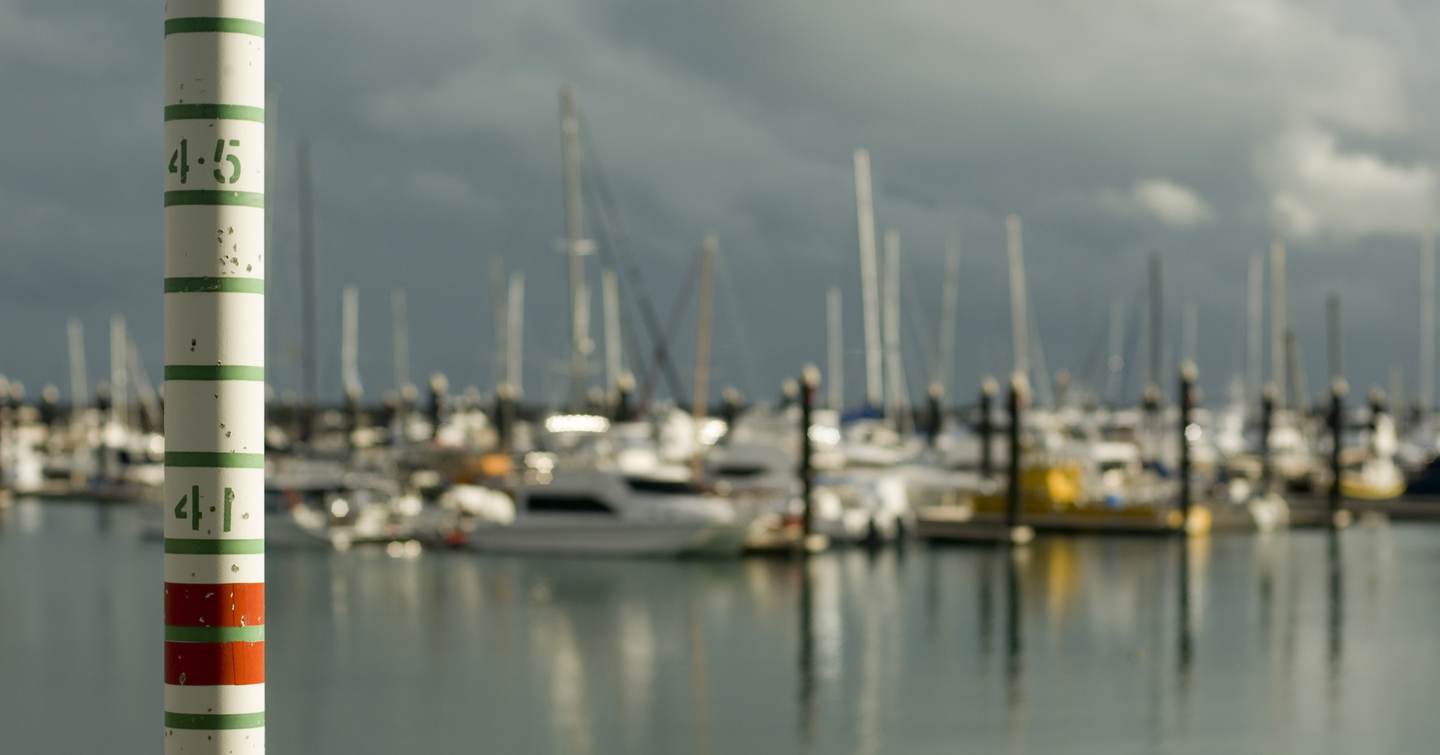
In tidal regions, it is common to observe a tidal gauge upon entering the harbor, indicating the current tide level.
Echo Sounder
An echo sounder on a yacht serves the vital purpose of measuring water depth beneath the vessel in real time. It provides essential information for navigational safety, helping to prevent grounding by alerting the crew to shallow waters. Additionally, it aids in identifying potential hazards below the water's surface.

Positioned on the hull, typically near the bow or the rudder, these devices emit sonar pulses that reflect off the seabed, delivering digital depth measurements on a screen in the bridge, helm, or wheelhouse.
As an additional safety measure, the echo sounder can be adjusted to show readings relative to the waterline or the bottom of the keel, depending on personal preference. If set at the waterline, the depth gauge will display the combined depth of the keel and water. If set at the bottom of the keel, the display will provide real-time information about the amount of water beneath the vessel at any given time.
